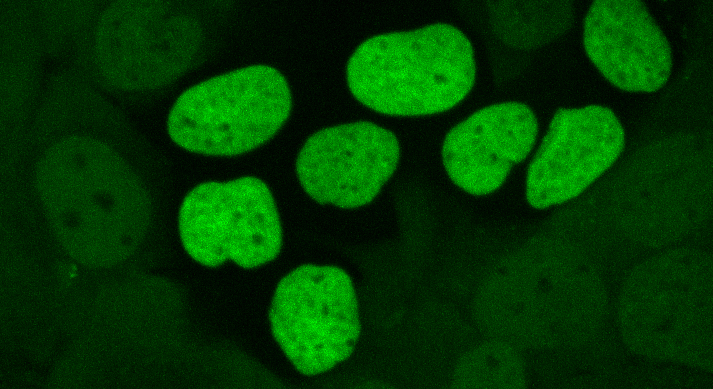Researchers solve long-standing ‘protein paradox’ and suggest way to exploit cancer weakness
Researchers from UCPH have discovered how thus far a mysterious function of the so called minichromosome maintenance (MCM) proteins protect the human cells against DNA instability, which can cause devastating diseases including cancer. In addition to their known role as molecular motors of genome duplication, MCM proteins in inactive state are now found to control the speed of this process. How cells manage to constrain the speed of DNA replication has puzzled researchers for decades and has even been called a “MCM paradox”.

Every cell in our body constantly divides to form new cells. This happens without us even thinking about it. However, every single time a cell divides, a complicated process has to unfold just the right way for our cells to avoid sickness and death.
The most essential step in this process is DNA replication, where the DNA in a mother cell is copied into its two daughter cells. Here, many molecules have to work together in order to assemble two new, identical DNA strings.
Writing for a prestigious international journal Nature, researchers from the University of Copenhagen have discovered how MCM proteins ensure that DNA replication proceeds at the right pace and thus avoids unnecessary molecular collisions, which could damage their genomes.
Even more importantly, the new findings explain how mother cells manage to instruct their daughters to keep the pace of their DNA replication within physiological limits. In simple terms, the new findings discovered nothing less than how an essential skill required for life continuation is preserved in cell’s memory.
‘We have quite many of these MCM proteins inside our cells. We can see them in the microscope, but for decades, scientists did not know what the vast majority of them actually do. From an evolutionary standpoint, it did not make sense to maintain a huge surplus of proteins only as back up, with no other important function. We have now solved this “MCM paradox” by finding that all those many MCM proteins in our cells actually have a defined function’, says first author Hana Sedlackova, PhD student at the Novo Nordisk Foundation Center for Protein Research.
Exploiting cancer weaknesses
To explain the new finding by an analogy, researchers found that the excess of young MCM proteins is used by cells to slow down the DNA replication by adding “speed bumps” ahead of their older siblings, that ‘drive’ the DNA replication engine. And while it may seem impractical to slow down this process, the body has a very good reason to do so.
‘These new results show that most of MCM proteins work a bit like speed bumps on a busy street. If they were not there, the traffic would go too fast and accidents could easily happen. Our study shows that the same thing happens in the cell: If the newly born MCM proteins cannot be passed by other cells on to their daughters, DNA is replicated too quickly, and this can be fatal for the cell. Just like a car, the DNA replication engine loses its maneuverability when it goes too fast’,” explains professor Jiri Lukas, Executive Director at the Novo Nordisk Foundation Center for Protein Research.
The researchers suggest that their findings could potentially help exploit the weaknesses of cancer cells.
“During our work, we have also found that the young MCM proteins require a ‘molecular babysitter’ (a protein called MCMBP), which protects them and escorts them to DNA, where they can be useful. Without such protection, molecular roadblocks that slow down DNA replication cannot be made. While DNA in normal cell can be viewed as a nice new highway that allows reasonably fast speed, DNA in cancer cells is riddled by ‘potholes’, where every fast car (or a molecular motor that replicates DNA) is bound to crash. Based on our new findings, we are currently testing the idea that genetic of pharmacological removal of the MCMBP, and the resulting high speed of DNA replication, can be tolerated by normal cells but lethal to cancer cells” says Jiri Lukas.
The researchers managed to map the proteins and find their function using a variety of high-tech equipment such as CRISPR-Cas9 and HaloTag. Using 4D imaging, they were then able to label native MCM proteins and observe how they are born in the mother cells, how they are inherited by their daughters, and how their functions are changed in the absence of MCMBP the ‘MCM babysitter’.
The study was funded by Danish Cancer Society and the Novo Nordisk Foundation.
Read the entire article: ”Equilibrium between nascent and parental MCM proteins protects replicating genomes”
Contact
Professor Jiri Lukas
jiri.lukas@cpr.ku.dk
+45 23 26 82 70
Press Officer Mathias Traczyk
mathias.traczyk@sund.ku.dk
53 56 58 35
